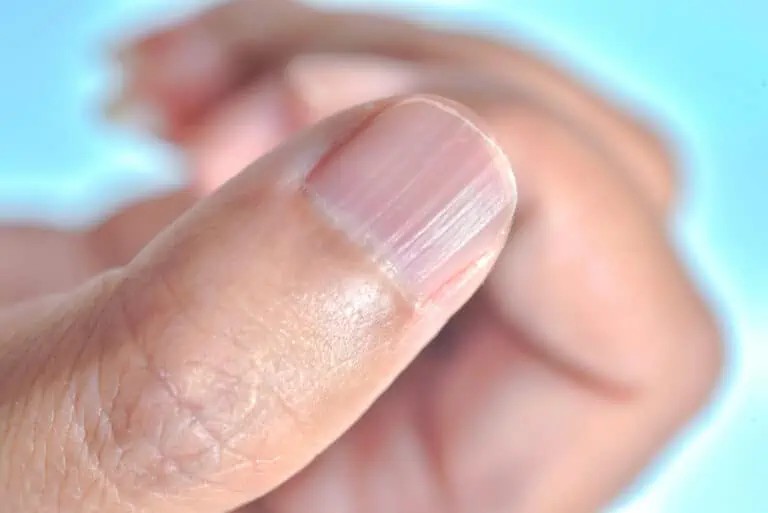Vertical or horizontal ridges in your fingernails are a common occurrence. While often harmless, particularly with age, they can sometimes indicate underlying health issues. Understanding the different types of ridges and their potential causes can help you determine if a visit to a dermatologist is necessary.
Understanding Fingernail Ridges: Vertical vs. Horizontal
The appearance of ridges can vary, offering clues about their origin. Vertical ridges, known as onychorrhexis, run from the base to the tip of the nail. Horizontal ridges, called Beau’s lines, are indentations that run across the nail. Let’s examine the potential causes for each type.
 alt text: Close-up of fingernails exhibiting vertical ridges.
alt text: Close-up of fingernails exhibiting vertical ridges.
Causes of Vertical Ridges on Nails
Aging is the most common cause of vertical ridges. As we age, our nails naturally thin and become more brittle, making these subtle lines more prominent. However, other factors can contribute to vertical ridging:
- Nutrient Deficiencies: A lack of essential nutrients like iron, folic acid (vitamin B9), or protein can manifest as vertical ridges. Eating disorders can also lead to these deficiencies.
- Skin Conditions: Inflammatory skin conditions such as psoriasis and lichen planus can affect nail health, resulting in vertical ridges.
- Medical Conditions: Hypothyroidism, rheumatoid arthritis, and rarer conditions like amyloidosis and Witkop syndrome can sometimes cause vertical nail ridging.
- Dehydration: Lack of moisture in the nail plate, often associated with dry skin, can contribute to vertical ridges.
- External Factors: Repeated trauma from manicures, pedicures, or harsh chemicals in nail products can also make vertical ridges more noticeable.
Causes of Horizontal Ridges on Nails (Beau’s Lines)
Horizontal ridges, or Beau’s lines, often signal a temporary disruption in nail growth. These indentations can result from:
- Trauma: Injuries to the nail bed, like hitting your finger in a door, can cause Beau’s lines.
- Artificial Nails: Prolonged use of artificial nails or gel manicures can damage the nail bed and lead to horizontal ridges.
- Skin Conditions: Eczema and psoriasis can also affect nail growth, causing horizontal ridges.
- Nutrient Deficiencies: Zinc or protein deficiencies can disrupt nail growth.
- Medical Conditions: Conditions that impact blood flow to the nails, such as peripheral vascular disease, diabetes, hypothyroidism, and Raynaud’s disease, can cause Beau’s lines. Other contributing medical issues include chronic kidney disease, severe infections (pneumonia, strep, COVID-19), and chemotherapy.
- Emotional Stress: Significant emotional stress or anxiety can sometimes disrupt nail growth.
Treatment and Prevention of Fingernail Ridges
If you notice changes in your fingernails, consulting a dermatologist is recommended to rule out any underlying medical concerns. Treating the root cause, whether it’s a nutrient deficiency or a medical condition, is crucial for healthy nail growth.
While age-related ridges are not reversible, you can take steps to improve overall nail health:
- Moisturization: Regularly moisturize your nails and cuticles.
- Avoid Harsh Chemicals: Limit exposure to harsh chemicals in cleaning products and nail polish remover. Wear gloves when handling these substances.
- Protect Your Nails: Avoid biting or picking at your nails and cuticles. Don’t cut your cuticles.
- Manicure Habits: Take breaks from artificial nails and gel manicures. Trim your fingernails in a curved shape and toenails straight across.
This information is for general knowledge and does not constitute medical advice. Consult a dermatologist for diagnosis and treatment of any nail concerns.
Medically reviewed by Stephanie McNamara, MD
Written by Jessica Brown, a health and science writer/editor based in Nanuet, New York. She has written for Water’s Edge Dermatology, Prevention magazine, jnj.com, BCRF.org, and many other outlets.
